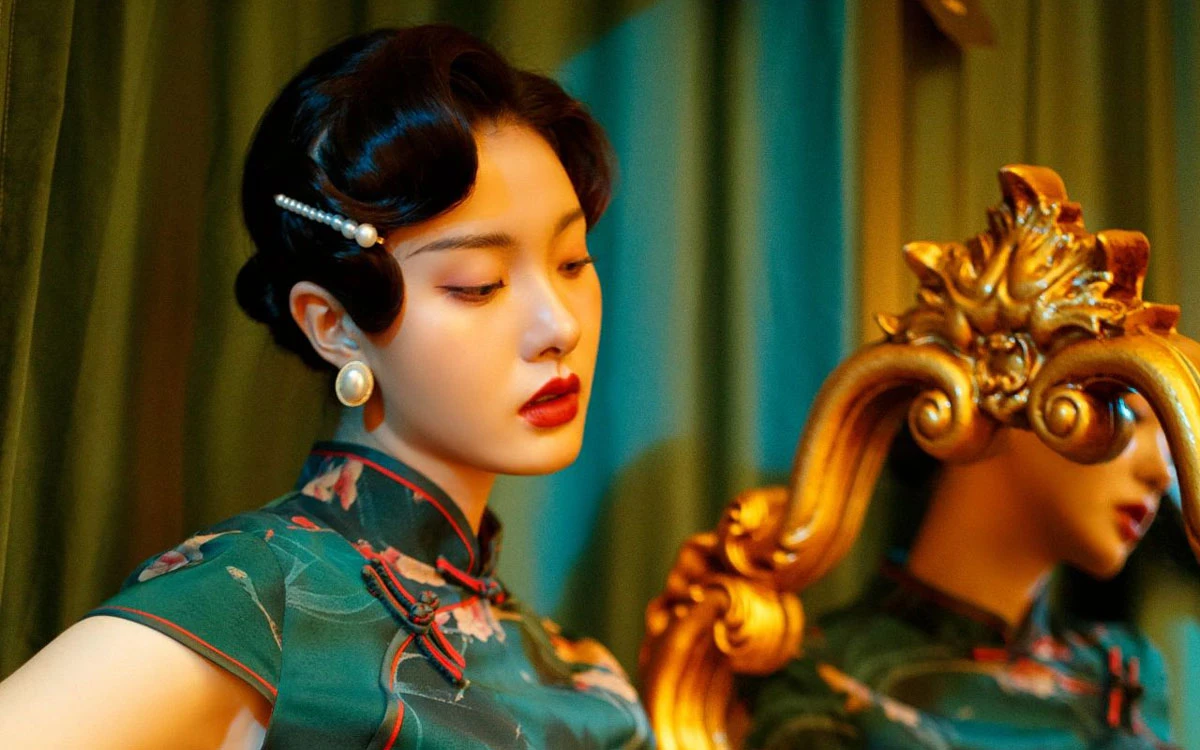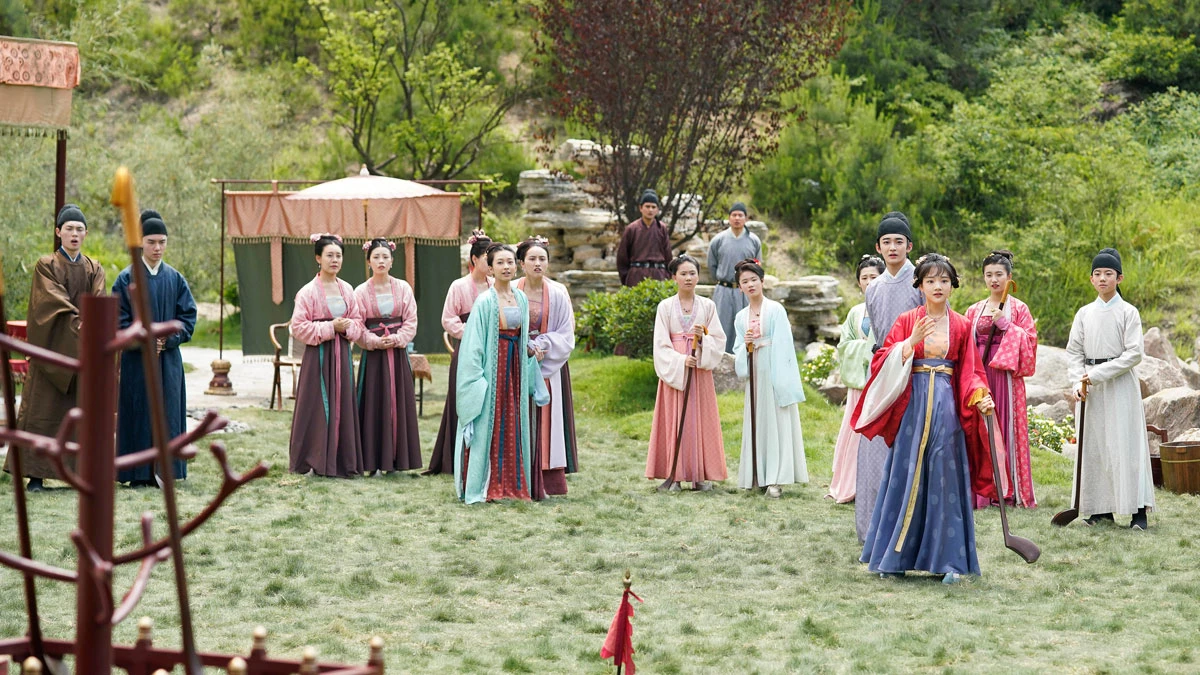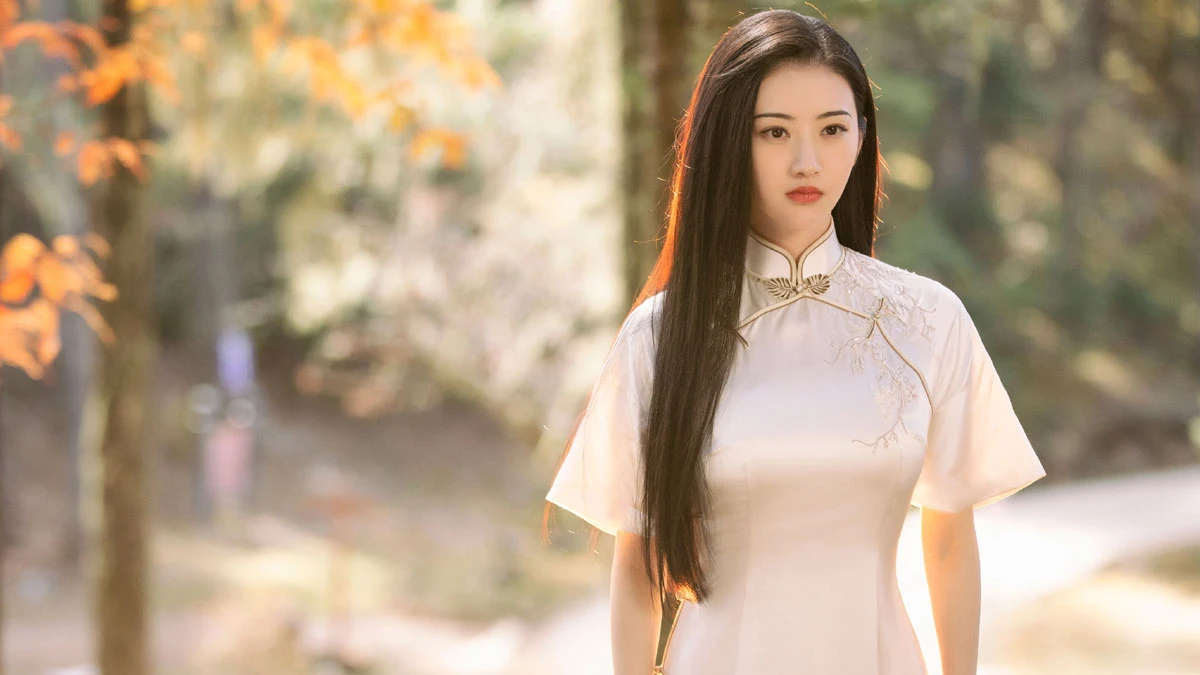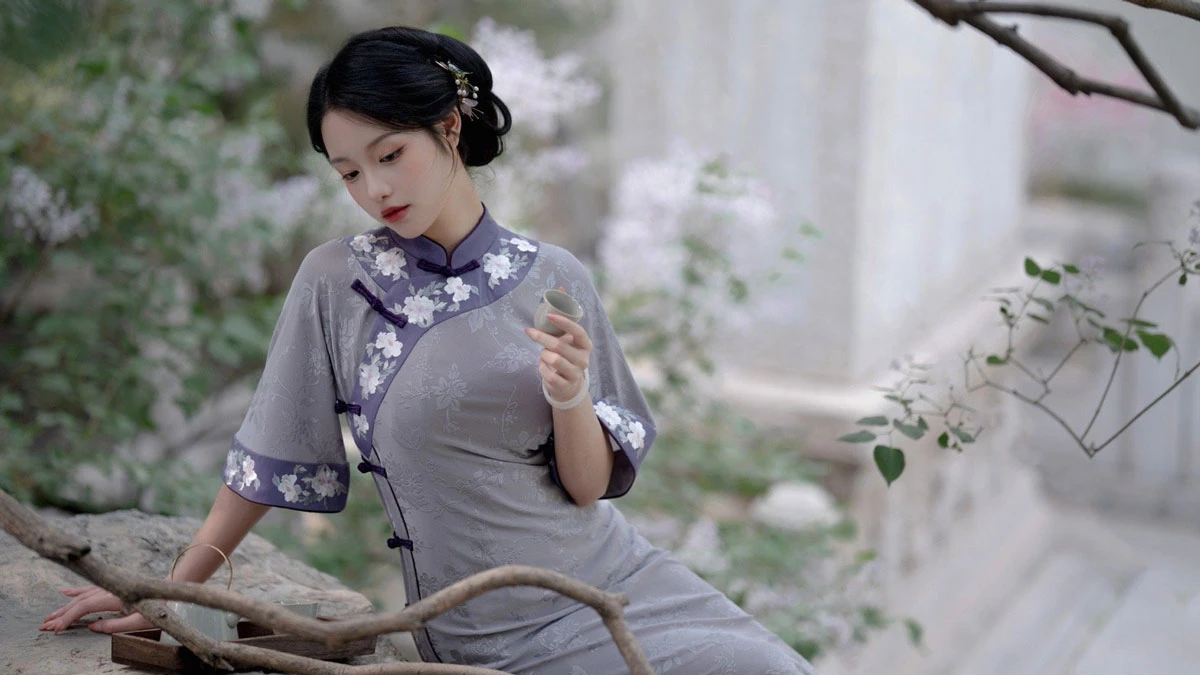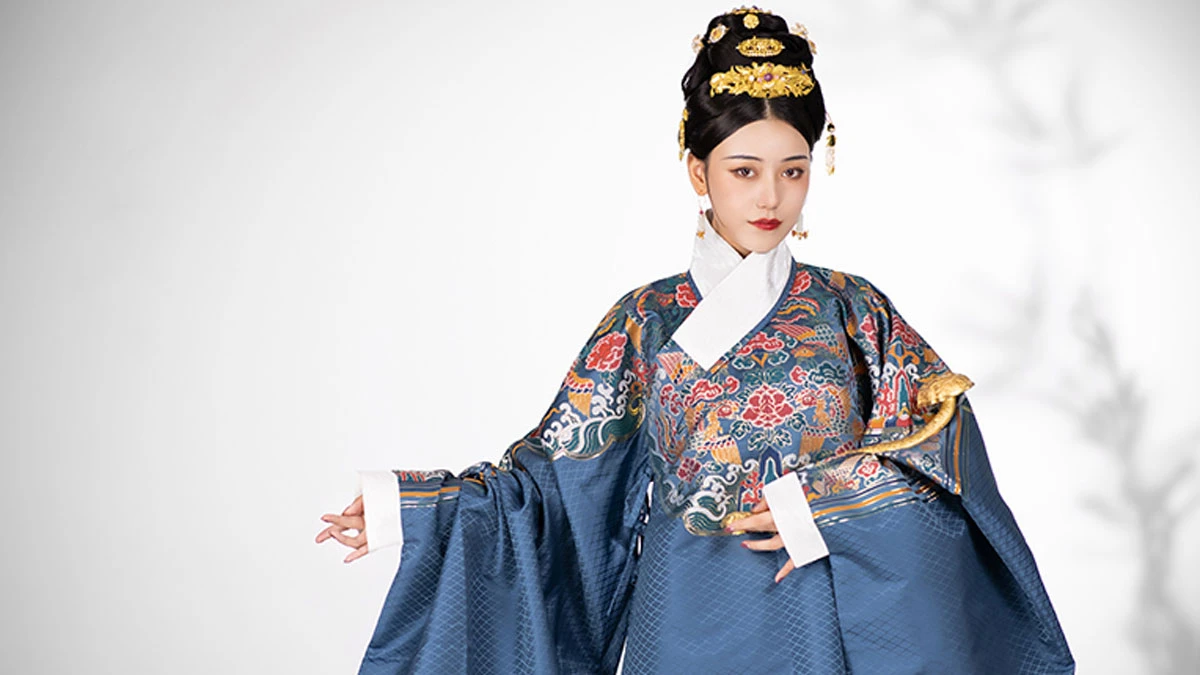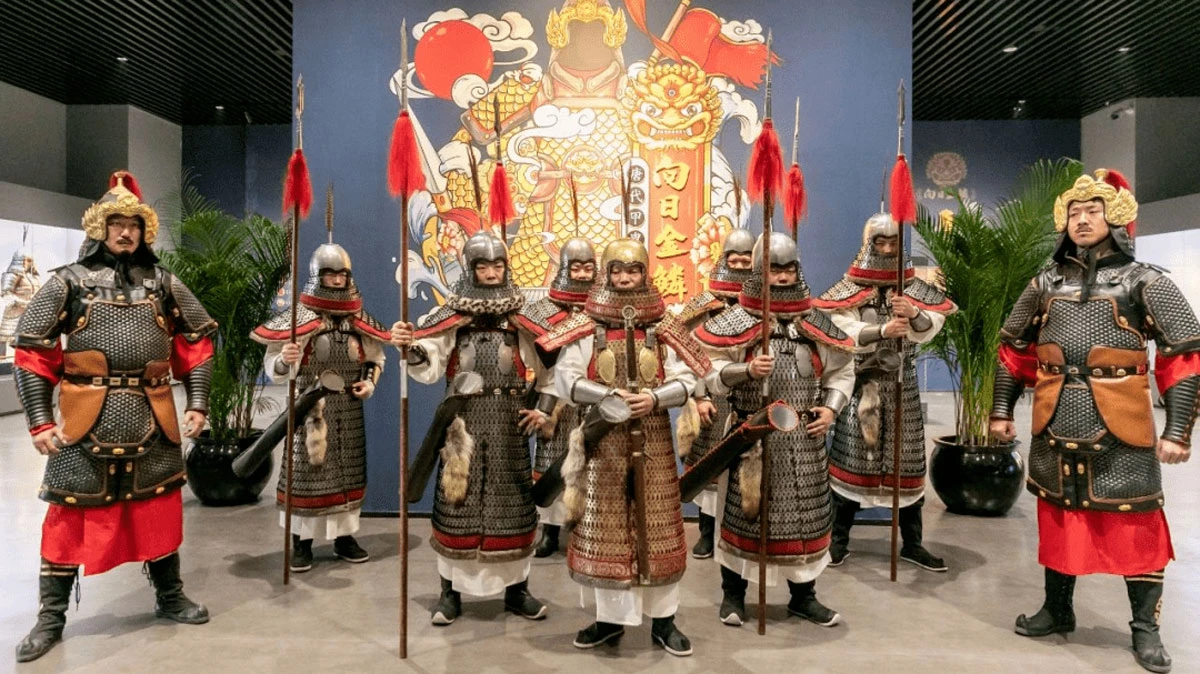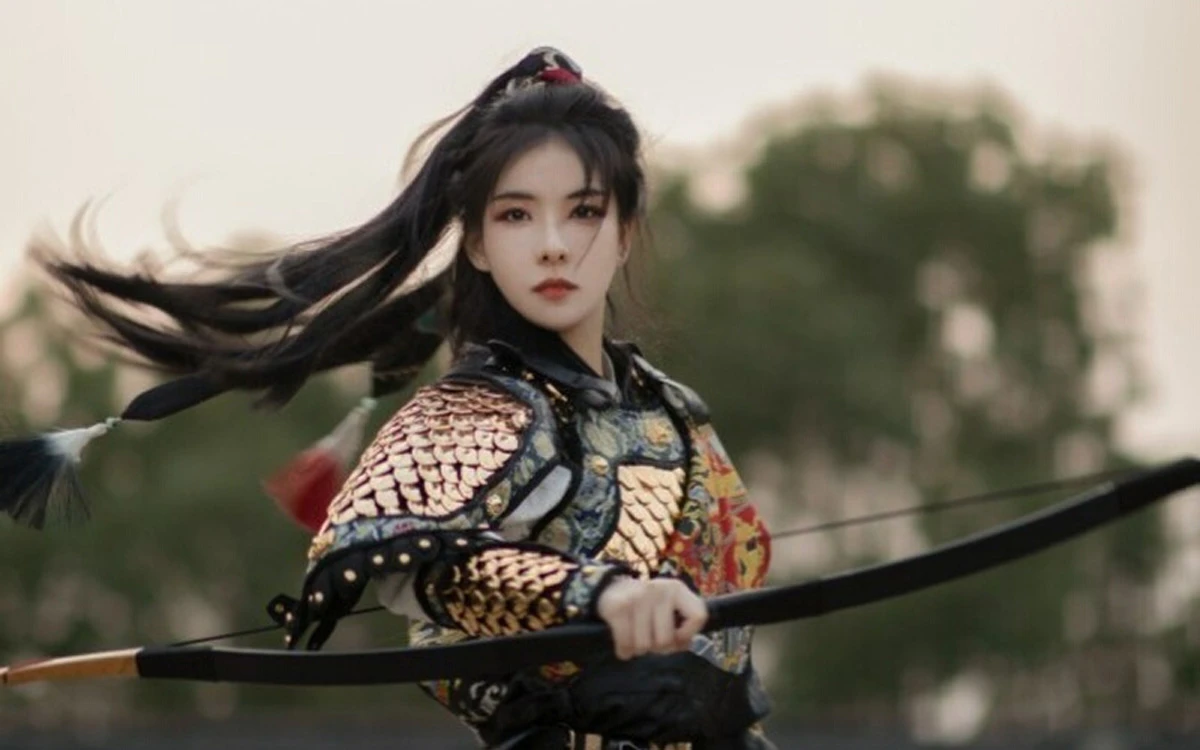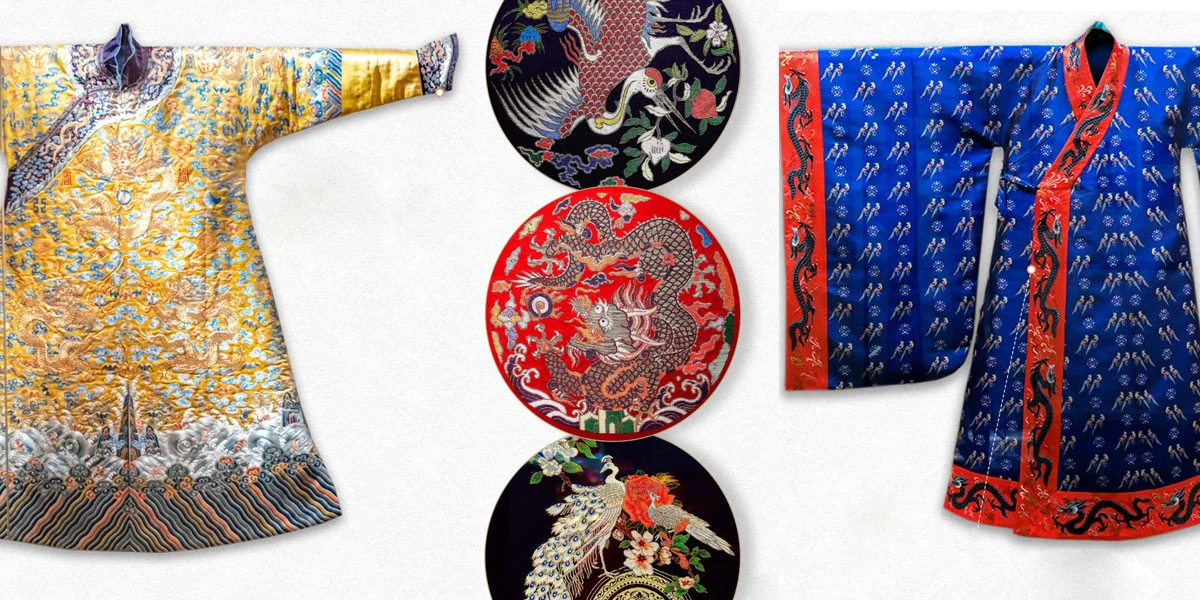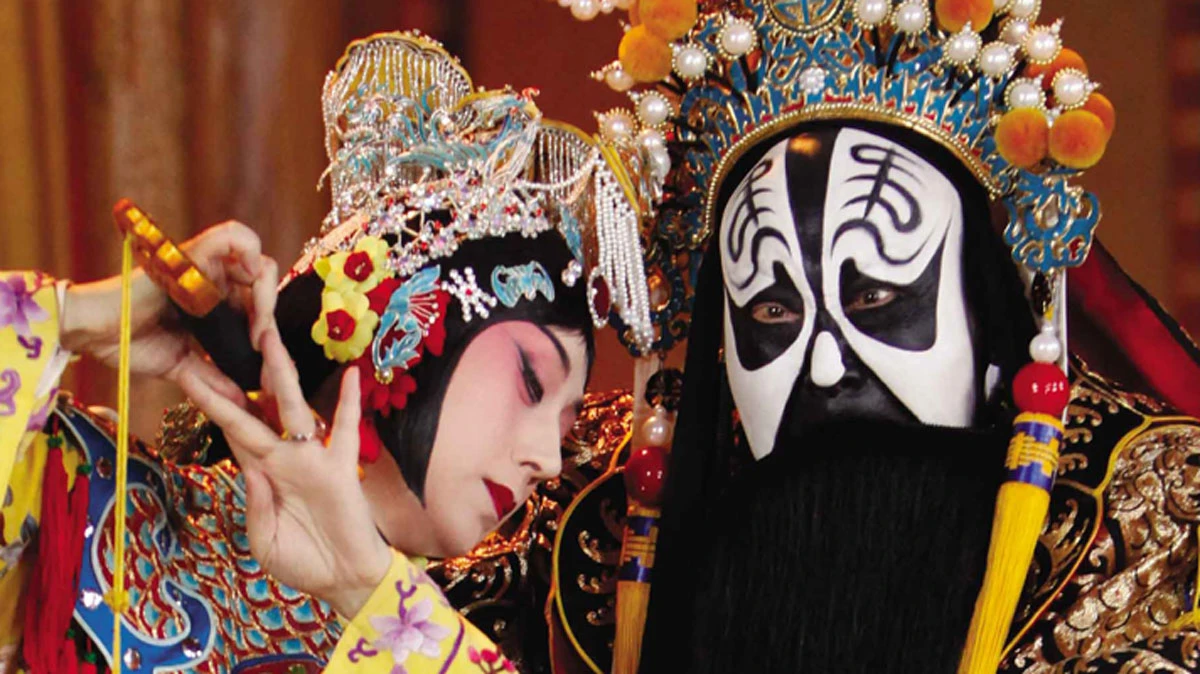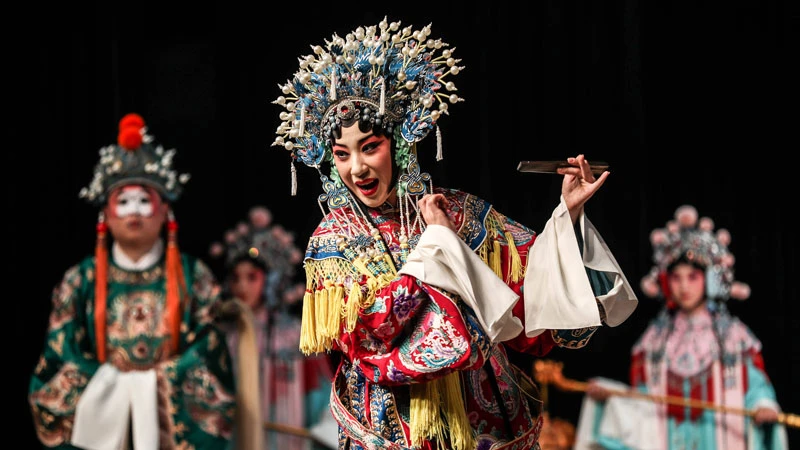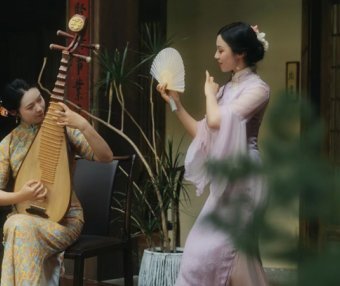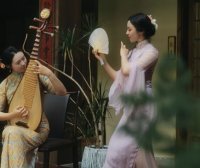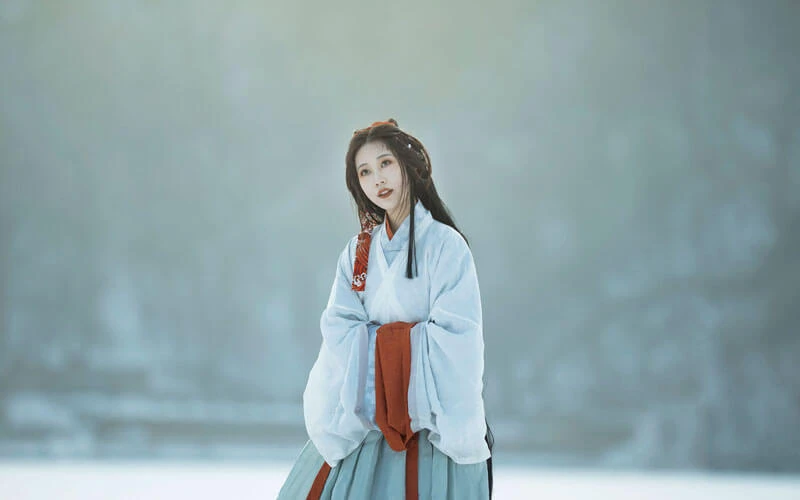
Traditional Chinese Costumes
About Chinese traditional costumes, including Hanfu, cheongsam (Qipao), Zhongshan suit (Zhongshan Zhuang), Tang suit (Tang Zhuang), Chinese minority costumes, etc.
Total 24 Articles
Topics: 5
-
The Perfect Accessories to Elevate Your Cheongsam Outfit
Are you looking to add some extra flair to your cheongsam outfit? Cheongsams are already a stunning traditional Chinese dress that exudes elegance and grace, but with the right accessories, you can take your outfit to the next level. Whether you're attending a formal event or simply looking to spice up your daily wardrobe, the right accessories can make all the difference. From jewelry, hats to handbags, there are many options to choose from. Here are some of the best accessories to match with your cheongsam. 01 Shawl A shawl can be a beautiful accessory to pair with a cheongsam outfit. One of the advantages of wearing a shawl with a cheongsam is that it can add an extra layer of warmth and comfort, especially if the dress is made of lightweight fabric. Additionally, a shawl can add a touch of elegance to the outfit, especially if it is made of luxurious fabric such as silk or cashmere. Another advantage of wearing a shawl with a cheongsam is that it can be used to add some color and texture to the outfit. A brightly colored or patterned shawl can complement the dress and create a beautiful contrast. It can…...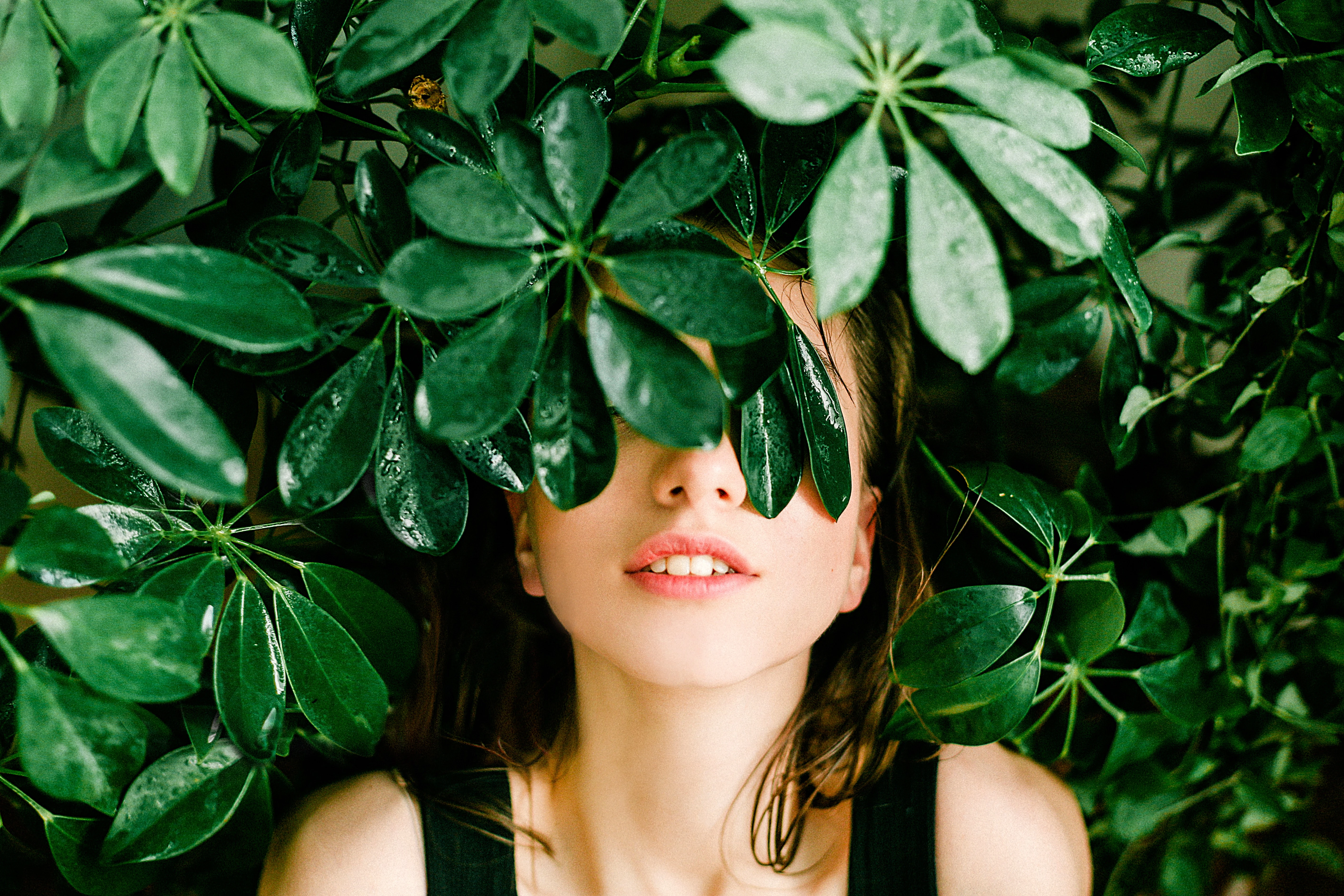 April
April- 4.5k
- 0
-
Exploring the Allegory of Chinese Color Theory in Traditional Dress
As an objective visual aesthetic element, the color in nature has a stable aesthetic meaning as the cognitive ability of the aesthetic subject improves and the aesthetic interest accumulates. Human cognition of the objective color world is the sublimation of people from material cognition to spiritual cognition, so color has strong psychological properties and emotional factors. During thousands of years of history, the Chinese people, with their unique cultural character, have gradually formed their own philosophical and discursive view of color in their consideration of nature and themselves. 1 Traditional Chinese Color Theory Ancient Chinese color theory is mostly derived from man's profound understanding of ecological phenomena in nature, as well as the imitation and generalization of natural colors. On this basis, the ancients linked their understanding of color with the traditional "Wuxing (五行, five phases)" philosophy, forming a very oriental flavor of the "Wuxing & Wuse (五行五色, five phases, and five colors" color theory. When the ancients began to understand color at the beginning, they saw that everything in the world was covered with harmonious and beautiful colors, so they had the desire to follow suit and collected colorful objects for their own decoration. With a further understanding…... Xinyi
Xinyi- 2.4k
- 3
-
Unveiling the Beauty and History of the Iconic Qipao Dress
Recently, Zhou Xun's Qipao (旗袍, cheongsam) dress look in the movie "Hidden Blade" brought this traditional costume back into the spotlight. If it is said that every era has representative clothing, then, the Republic of China women's closet must not be missing one cheongsam. 01 Fashionable clothing in the Republic of China period Qipao dress can be said to be the most representative clothing in the Republic of China. For social needs, the ladies also often update cheongsam style. Song Meiling often wore cheongsam, when she went to the United States to seek support for the war, especially when she spoke in the U.S. Congress, the image of a black satin cheongsam stunned the crowd, while boarding the major U.S. magazines. The popularity of the cheongsam owes much to the successful incorporation of practical Western elements without losing traditional Chinese features. Although designated as one of the Chinese dresses, the Qipao dress is actually a Western-style wear under a Chinese-style appearance. On the outside, the Qipao dress still adheres to the traditional Chinese elements such as silhouette, Pankou, and vertical collar, and the custom of "right overlapping" is also retained, which constitutes the unique aesthetic form of the Qipao…... April
April- 1.3k
- 2
-
The Art of Cheongsam Collar: An Exploration of the Different Styles and Their Feature
Cheongsam, as one of the traditional Chinese dresses, can be seen as one of the tags of oriental women. It is like an ink-scented rice paper, which writes the history of Chinese dress, and like an inscription of the ancient time, even the folds of which contain the scent of ancient culture. It is not only a garment, but also a carrier of traditional Chinese culture. As one of the key elements of the composition of cheongsam, the collar shape has a very important influence on the style of cheongsam. Traditional cheongsam collar, often with a stand collar design, formed an elegant effect, with good effect in highlighting the lines of the female neck and body. The details of the cheongsam collar, show the workmanship, also the soul of the cheongsam. The right collar type can fit perfectly with the body, but also with the cheongsam as a whole, to the overall style of cheongsam into more exquisite aesthetic temperament, from the fundamental focus on temperament. The origin of the cheongsam collar The relationship between modern cheongsam and Qing dynasty Manchu robe is still controversial, but it is undeniable that there is an inextricable relationship between cheongsam and Qi…... April
April- 1.4k
- 1
-
Tracing the Fascinating History of Cheongsam: From Qing Dynasty to Modern
For centuries, the cheongsam has been a symbol of elegance, femininity, and Chinese culture. Also known as qipao, this form-fitting dress has been worn by women in China and beyond, captivating the world with its stunning beauty and timeless charm. While the cheongsam is now a fixture on fashion runways and red carpets around the world, its origins and evolution tell a captivating story of cultural exchange, fashion innovation, and societal change. From its early beginnings in the Qing Dynasty to its modern-day reinventions, the history of the cheongsam is one of the most fascinating and enduring tales of fashion history. In this article, Hibetterme explores the rich history of the cheongsam, the characteristics of modified cheongsam, and how to pick the right style of cheongsam for you. The Evolution of cheongsam The origin of the cheongsam is actually quite controversial. Some scholars believe that it is the robe of the Qing Dynasty, and in the late Qing Dynasty and the early Republic of China, it gradually evolved into the current cheongsam due to social changes and the influence of Western culture. Some scholars also point out that the origin of cheongsam should be older than the Zhou, Qin,…... April
April- 1.8k
- 2
-
The Origin and Classic Style of Chinese Hanfu
After thousands of years of history, Chinese Hanfu styles are extremely diverse. However, the Hanfu recognized today mainly refers to the costumes of powerful dynasties such as Han, Tang, Song, and Ming, and is also the main basis for contemporary Hanfu design. There is no longer to consider the hierarchy in wearing modern Hanfu, with a richer mix of colors, patterns, and fabrics. Modern Hanfu designs are more simple and more comfortable, incorporating more fashionable elements while not losing beauty. Hanfu enthusiasts can choose and match Hanfu according to their own style and preference. However, because of its distinctive national characteristics, following certain wearing etiquette will definitely make the wearer more elegant and confident. The Origin of Hanfu Chinese Hanfu is the traditional costume of the Han people. How did the name originate? How is it worn? What is the relationship between Han Chinese costume and Chinese culture? These questions can not be explained in a few words. First of all, we need to understand the origin of the Han Chinese, the early Han Chinese set the tone for the dress of later generations. Hua Xia The Han originated from Huaxia. The term "Huaxia (华夏)" was first used in…... Xinyi
Xinyi- 1.3k
- 1
-
The Main Types of Chinese Ancient Helmets
The Chinese ancient armor protecting the head was called Zhou (胄, helmet) in the pre-Qin period. In oracle bone inscriptions, the helmet is painted as a shield with a vertical tube at the top. And many of the bronzes excavated from the Yinxu tomb in Anyang are fully consistent with this phenomenon. However, there is a lack of a standard for the definition of other ancient helmets without vertical tubes in Western Zhou and Spring and Autumn Warring States. Therefore, the emergence of iron head armor as the dividing line, before that, regardless of whether they had vertical tubes or not, they were called Zhou regardless of whether the material specifically leather or bronze, after that, they were divided into two categories: Dou Mou (兜鍪, helmet) and Kui (盔, helmet). But those with vertical tubes with feathers as decoration were still called Zhou, such as the unified style of the Qing Dynasty. Ancient helmets from the pre-Qin period Bronze Zhou (胄) of the pre-Qin period is bounded by the Shang and Zhou (周) dynasties. The surface of Zhou in the Shang Dynasty is generally cast with Taotie, round sunflowers, and other patterns, and the unearthed objects in Xingan County,…...Watkins
- 5k
- 0
-
The Rebirth of Traditional Chinese Armor Making Skills
Wearing armor, riding a horse, holding a traditional weapon, fighting on the battlefield. Such a scene may have appeared in the dreams of many people when they were young. But there is a person who turned the traditional Chinese armor in the dream into reality, he is the first person to restore the ancient armor of the Tang and Song dynasties, Wen Chenhua (温陈华). He has highly restoration the armor of the Song dynasty, which has been lost in China for 700 years, after 6 years. He founded the Lian Kai Tang (炼铠堂), and with his own strength, he promoted the obscure armor restoration craft, and let Chinese armor on the world-class combat stage. #01 The first person in traditional Chinese armor restoration There are only about 1000 armor restorers in China, 90% of them are Wen Chenhua's students, and for 40 years, he has been restoring Jiazhou (甲胄, traditional Chinese armor) to the extreme. On Wen Chenhua's social platforms profile, there is only a simple sentence "Top Chinese Jiazhou maker" as an introduction. However, he has shared a lot of armor design drawings and finished armor photos, all revealing his deep love for Jiazhou. Traditional armor restoration and…...Watkins
- 1.7k
- 0
-
Huaxia Dresses - The Evolution of Chinese Traditional Wear
Huaxia dresses brilliantly for thousands of years. How rich is the Chinese traditional wear? Follow the INSTITUTE FOR PLANETS to enjoy a journey through a thousand years of Chinese costumes. Huaxia Dresses - Prehistory to Shang & Zhou Period Looking back tens of thousands of years ago, human beings learned to sewn clothes with Guzhen (骨针, bone needle). Perhaps inspired by making ropes and bamboo baskets, around 7,000 B.C., Chinese ancestors began to weave fabrics with plant fibers. In order to improve the weaving efficiency, the Fanglun (纺轮, spinning wheel) was created that used pottery sheets to rotate inertial for twisted threads. There is also the Yaoji (腰机, waist machine) that is used to bind lines and make them tight and easy to knit. In that era of extremely backward productivity, it was not easy to get fabric, so the shape of clothes was relatively simple. Two narrow pieces of cloth were directly combined and then tie a straw rope, which may be the daily dress. With the continuous development of society, the function of clothing has long been more than just covering up and keeping warm, it has also been endowed with a lot of aesthetic concepts, which is…...Rose
- 1.8k
- 3
-
The Many Faces of Chinese Opera
Chinese opera (戏曲, xìqǔ) can be tracked to as far back as the Northern Qi Dynasty, and since then has grown into the instantly-recognizable spectacle of music, costumes, and drama it is today. Its characters are especially memorable as they sing, act, and fight across the stage. There are four main types of roles in opera: Dan, Sheng, Jing, and Chou. Dan Dan (旦) is a broad term that refers to all female roles in Chinese opera. Subtypes within the Dan role include Guimen Dan, young women whose parts focused on vocal performance, Zheng Dan (also known as Qingyi Dan), older higher-class women, and Wudan, who specialize in acrobatics and do not often sing. Up until the late Qing Dynasty, all roles, including the Dan, were played by men. Mei Lanfang, considered one of the “four great Dan,” was one such male Dan performer who pioneered an entire new subtype of Dan and was considered by some to be the greatest vocal artist in modern China. Mei also played a key role in popularizing Chinese opera outside of China over the course of a 50-year career. Male Dan roles were made obsolete during the Cultural Revolution, but the legacies of those…...myingmei
- 1.1k
- 1
-
Are the Beijing Opera Costume the Same to Hanfu Costume?
From the beginning of the hanfu revival to today, regardless of the general acceptance of hanfu, there are always some hanfu lovers who wear hanfu to some events and occasionally encounter the question asked by others: Are you going to attend a Peking Opera performance or the recording of the show? Of course, such embarrassing situations may be rarer nowadays, but most people still confuse traditional Chinese opera costumes with the hanfu. The costumes used in Beijing opera are also categorized with traditional Chinese opera costumes, which are different from the Chinese hanfu costume. It is because some of the opera costumes are inspired by hanfu and naturally there are similarities in some parts, but what are the specific differences between the two? Let's follow the Hanfu Shidai (汉服世代) and find out. Chinese Opera costume vs Hanfu Hanfu - the full name of the Han traditional costume system - is divided into two historical stages: ancient and modern. The ancient hanfu originated from the creation of the Yellow Emperor's garments and vanished at the beginning of the Qing Dynasty under the policy of "Tifa Yifu", which was a self-contained cultural system. The modern hanfu is a traditional national dress…...Jane
- 1.6k
- 0
-
The Origin of Cheongsam and Chinese Women Is the Memory of Stunning Times
01 The cheongsam loved by women Eileen Chang once said, "Clothes are a language", and every heroine in her novels would use the style of cheongsam to interpret the sorrow and happiness of love, and the prosperity of silk to lament the impermanence of fate. And Eileen Chang's love for cheongsam can be described as close to crazy. Cheongsam is not only an important prop in her novels, but also an indispensable costume in her life, and it is an expression of her views on life, aesthetics and women. The cheongsam maker who made her cheongsam recalled that he couldn't remember how many pieces of cheongsam he made for Eileen Chang, but he remembered that each piece of cheongsam was made "according to the drawing", and the design came from Eileen Chang herself. Not only Eileen Chang, but also Chinese women in the 1930s and 1940s seemed to be very fond of cheongsams. Soong Mei-ling was no less fond of cheongsams than Eileen Chang, and she had hundreds of cheongsams in her closet. Film and television stars such as Hu Die, Ruan Lingyu, and Zhou Xuan are also fans of cheongsam, they not only wear cheongsam out of their own…...secannon
- 845
- 1
